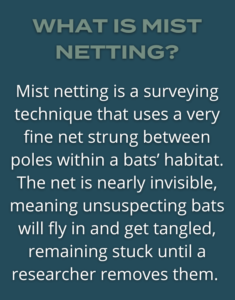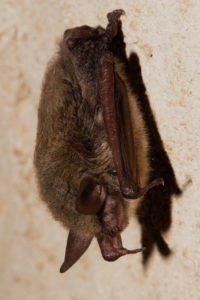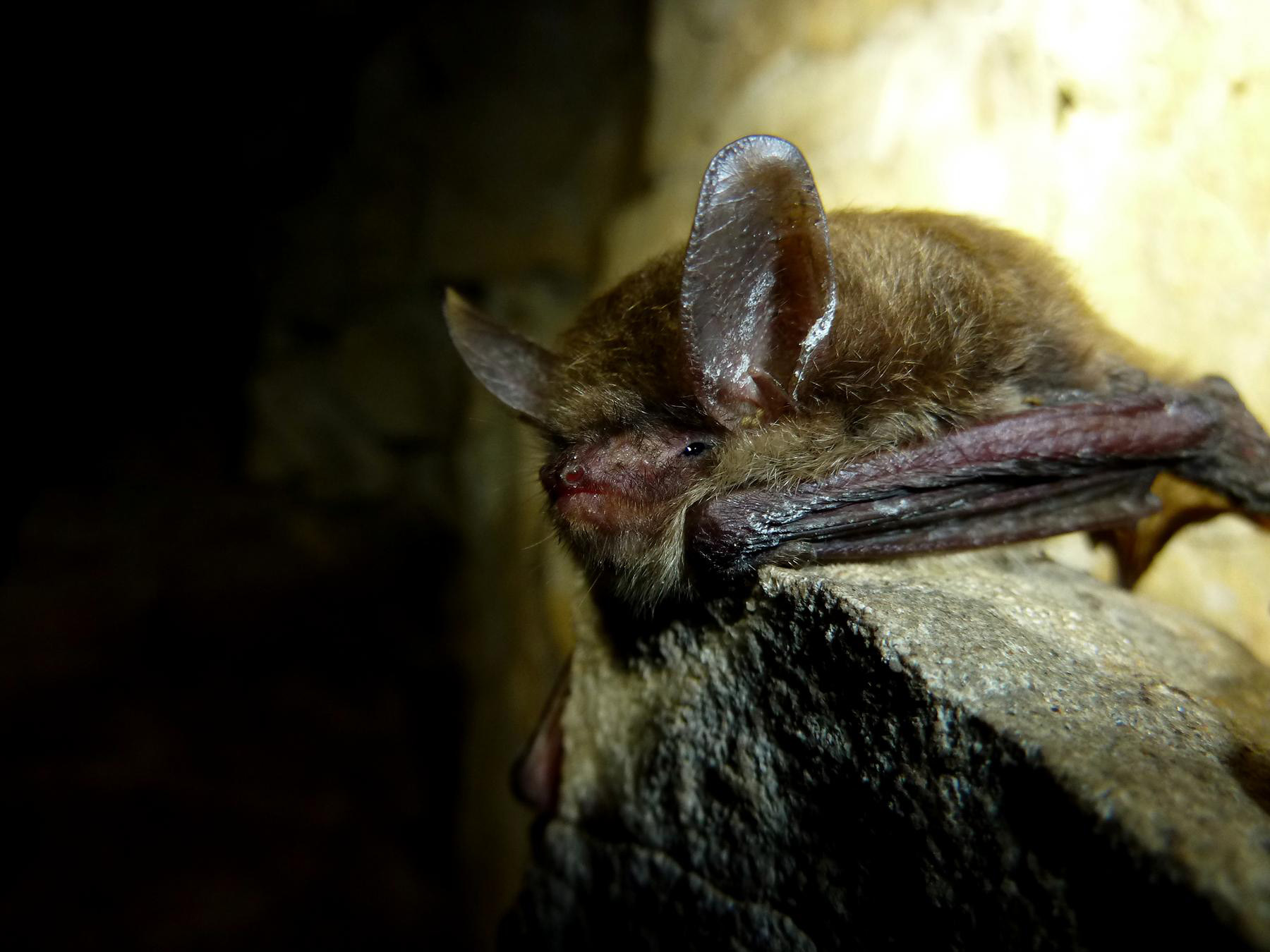With more than 1,400 species worldwide, bats are the second largest group of mammals, being found almost everywhere on Earth. They’re also, unfortunately, one of the most misunderstood species. Bats are essential to our environment, providing vital ecosystem services like insect pest consumption, plant pollination, and seed dispersal. And for conservation in Tennessee, one little bat even helped protect nearly one thousand acres of forested habitat adjacent to Grassy Cove along the Justin P. Wilson Cumberland Trail State Park.
NORTHERN LONG-EARED BAT
In 2016, TennGreen Land Conservancy (“Tennessee Parks and Greenways Foundation” at the time) intended to acquire 956 acres known as the Karst Forest at Grassy Cove. This acquisition required a major fundraising effort, including significant private, local, and federal funds. In order to secure a $1.35 million grant from the US Forest Service’s Forest Legacy Program, TennGreen and partners undertook numerous biological surveys identifying rare plants and animals. In 2017, TennGreen’s Karst Forest at Grassy Cove ranked 8th nationally for funding through the Forest Legacy Program.  This ranking level, and grant funding, were made possible when the Tennessee Wildlife Resources Agency (TWRA) mist netted a northern long-ear bat (Myotis septentrionalis) on the property. The US Fish and Wildlife Service listed the northern long-eared bat as a federally threatened species in 2015. Discovering this threatened bat and other rare bats on the property underscored the importance of funding the acquisition of the Karst Forest at Grassy Cove. Armed with this new species information, TennGreen secured the Forest Legacy Grant and significant additional funds to acquire the property.
This ranking level, and grant funding, were made possible when the Tennessee Wildlife Resources Agency (TWRA) mist netted a northern long-ear bat (Myotis septentrionalis) on the property. The US Fish and Wildlife Service listed the northern long-eared bat as a federally threatened species in 2015. Discovering this threatened bat and other rare bats on the property underscored the importance of funding the acquisition of the Karst Forest at Grassy Cove. Armed with this new species information, TennGreen secured the Forest Legacy Grant and significant additional funds to acquire the property.
WHITE-NOSE SYNDROME
Despite bats being vital to our world’s ecosystems, hundreds of bat species face threats to their existence. Northern long-eared bats (pictured), along with many other  bat species throughout the United States, have experienced steep declines in population sizes, primarily due to the spread of White-nose syndrome (WNS). WNS, caused by the fungus Pseudogymnoascus destructans, is a fatal disease impacting bat populations in the United States and Canada. First reported in the United States in 2006, WNS transmission has extended to nearly every state east of the Mississippi River, including Tennessee. Scientists estimated that WNS has killed more than 90% of northern long-eared, little brown, and tri-colored bats (Conservation Biology, 2021). WNS gets its name from the white fungal growth seen on the noses and wings of infected bats. When a hibernating bat becomes infected with WNS, the fungal growth causes the bat to wake up more often. Frequent waking makes the bat use up more of its stored fat and starves before it finishes hibernating.
bat species throughout the United States, have experienced steep declines in population sizes, primarily due to the spread of White-nose syndrome (WNS). WNS, caused by the fungus Pseudogymnoascus destructans, is a fatal disease impacting bat populations in the United States and Canada. First reported in the United States in 2006, WNS transmission has extended to nearly every state east of the Mississippi River, including Tennessee. Scientists estimated that WNS has killed more than 90% of northern long-eared, little brown, and tri-colored bats (Conservation Biology, 2021). WNS gets its name from the white fungal growth seen on the noses and wings of infected bats. When a hibernating bat becomes infected with WNS, the fungal growth causes the bat to wake up more often. Frequent waking makes the bat use up more of its stored fat and starves before it finishes hibernating.
Although WNS is primarily spread from bat to bat, humans may spread the disease through infected clothing when recreating in caves. For this reason, the State of Tennessee has gated many caves on public property. To help ensure you aren’t spreading WNS, stay out of gated and closed caves, leave bats alone, and clean your shoes and gear before and after entering open caves.
Want to read about other Tennessee species? Check out our snake and turtle blog post!

